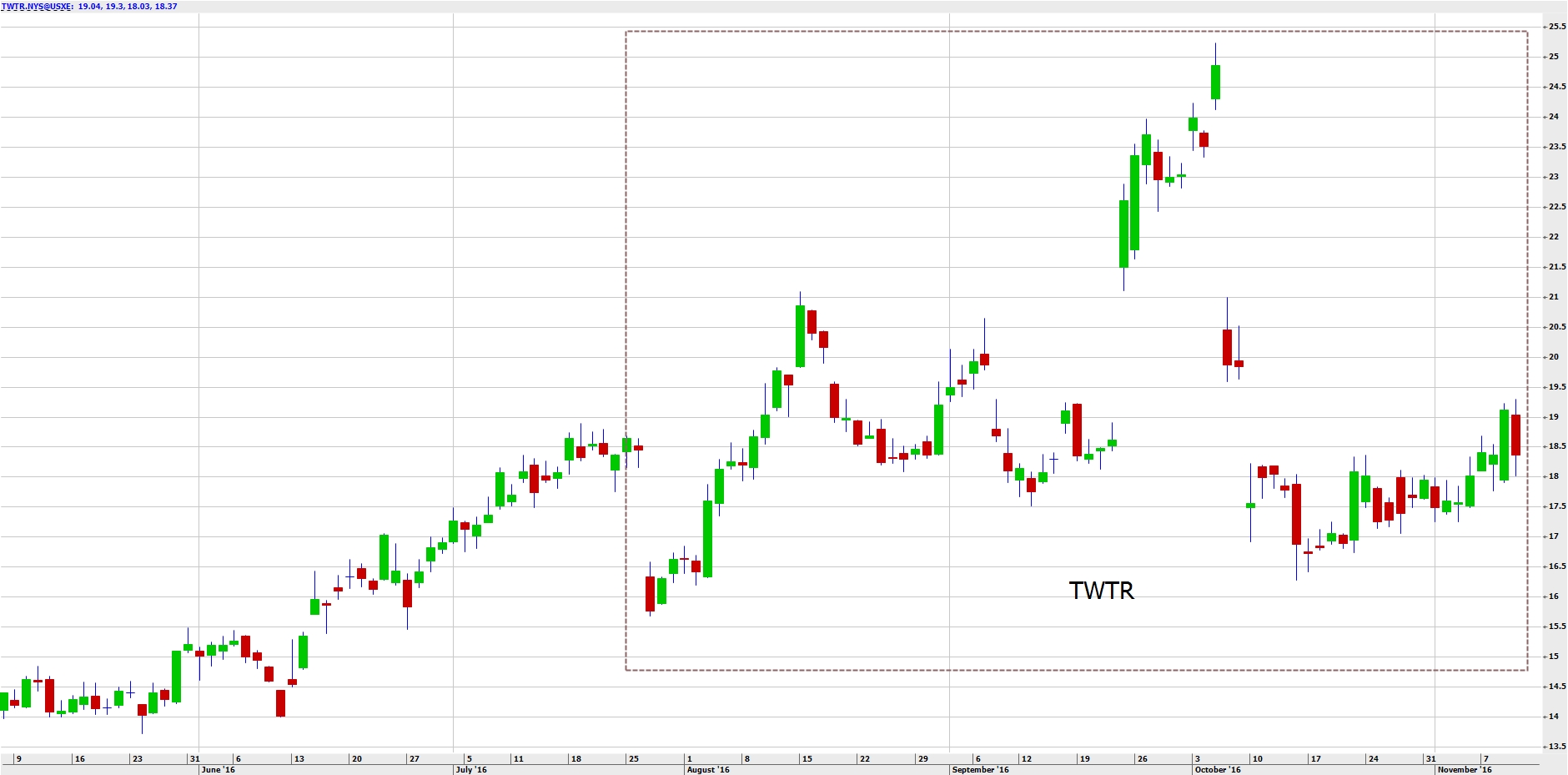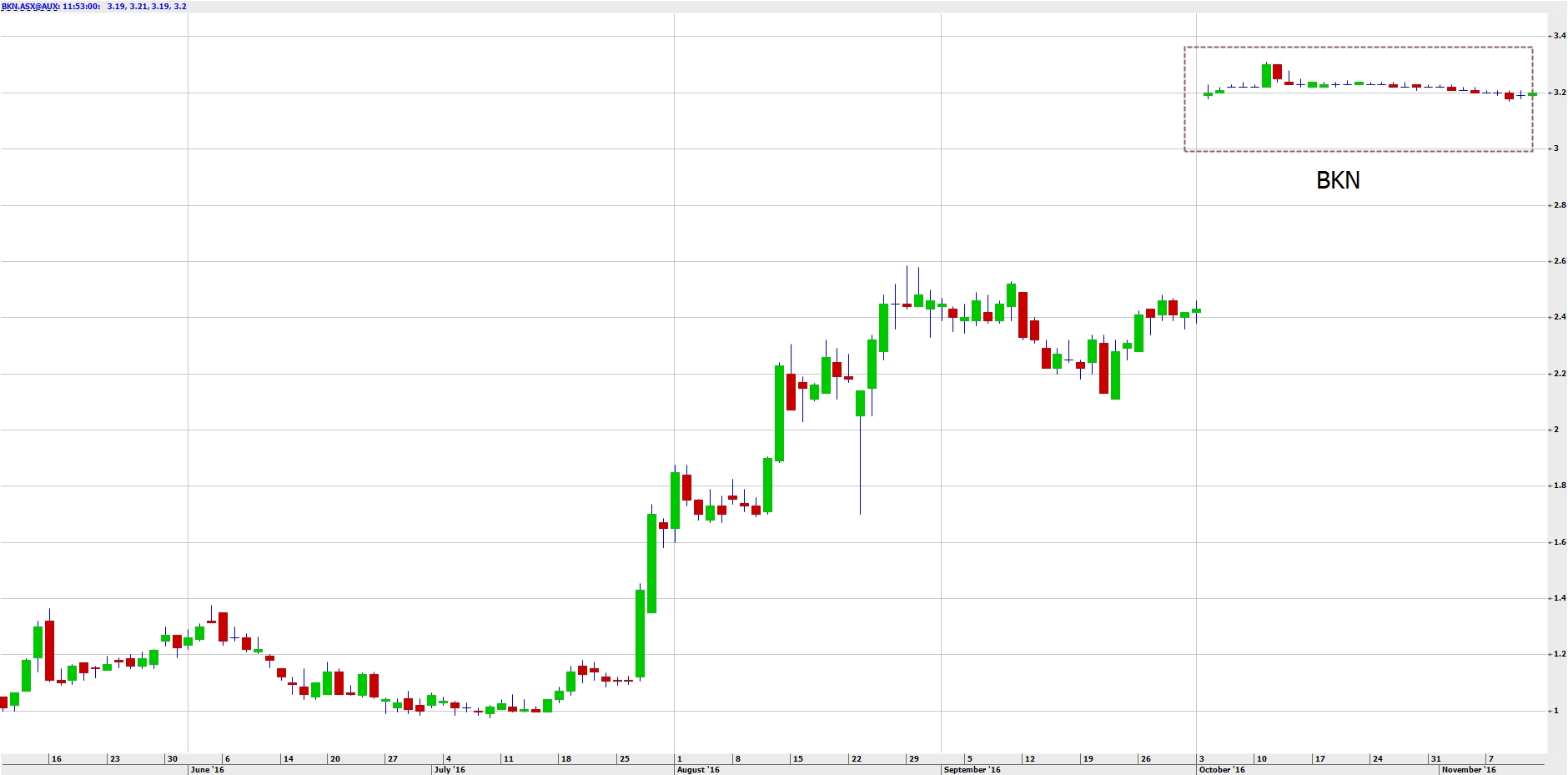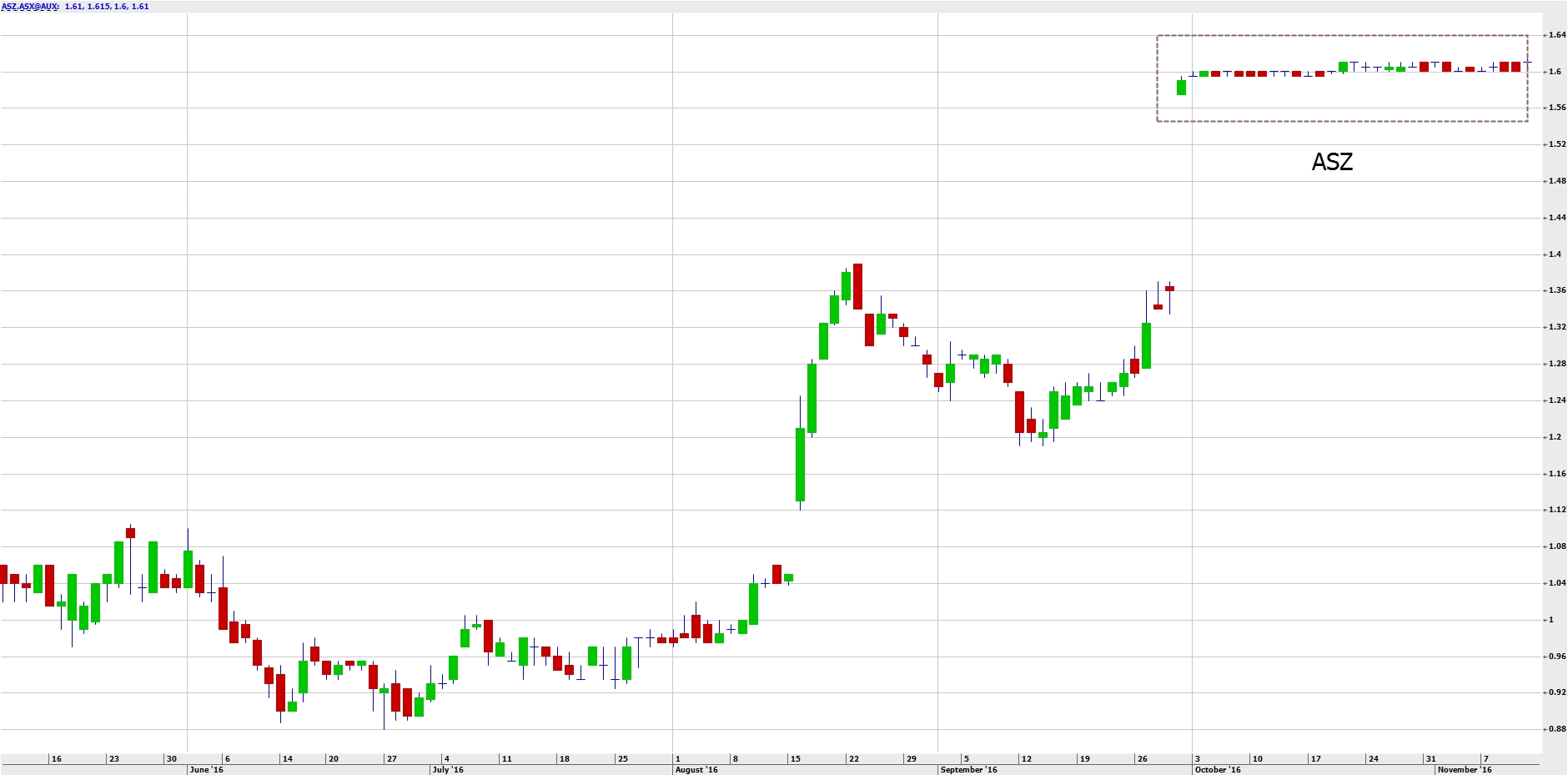Merger Arb: The ‘right’ way and the ‘wrong’ way
Appearing below is a chart showing the recent share price movements of Twitter Inc (TWTR). As you can see, it has been a wild ride recently as the stock has been subject to much rumour and innuendo regarding the likelihood of a bid for the company. On any number of days, the stock has moved up or down by more than 10%. This type of activity is what most people think of when they think about Merger Arb but it couldn’t be further from how a disciplined approach to Merger Arb works, at least not in terms of how we prefer to implement it. Situations such as TWTR are arguably exciting but they have no place in our portfolio.
source: IRESS
Contrast the chart of TWTR with the charts of Bradken (BKN) and ASG Group (ASZ) both also appearing below. In the sections highlighted on each chart, the daily price movements of both stocks exhibit very little volatility. This is because, unlike TWTR, these stocks are both already subject to firm bids that in our estimation, are highly likely to succeed. Buying each of these stocks after the takeover bids have already been announced significantly reduces the volatility that would normally be exhibited by these two stocks, as much of their market correlation has been removed i.e. these stocks should now move in line with developments specific to their respective takeovers rather than in line with the market more broadly.
source: IRESS
source: IRESS
At the time of writing, it looks likely that both takeovers will complete on their currently agreed terms. If so we expect our returns will be positive, but relatively modest. However, an improved bid for one or both stocks could yet occur and importantly, the likelihood of either deal failing is in our estimate, quite low. So, whilst neither BKN or ASZ may get an improved bid, we know that if we take enough positions in stocks just like them, that a great many of them will receive improved bids. All that we need to do then, is assemble a portfolio of prospective opportunities whereby we believe the downside risk is inherently low and the returns will largely take care of themselves. This portfolio of opportunities has the added benefit of not only being largely uncorrelated with the market but so too that each position within the portfolio is uncorrelated to every other position held.
So, given the choice, the ‘right way’ seems like a no-brainer to us, even if it is a lot less exciting. It is easy to understand the attraction of a stock like TWTR or any other high profile stock that is the subject of takeover rumour or innuendo. Media hype and FOMO (or ‘fear of missing out for those of us over 30) have a lot to answer for. Being on the right side of a trade that can return 10% in a day makes for better dinner party conversation than following a strategy that is likely to return 10% for an entire year. Of course, being on the wrong side of the trade and losing 10% in a day is a whole other matter.
In our experience, a disciplined, rather more circumspect approach is in order. By choosing to use an approach similar to our own, your portfolio will be subject to less volatility and your capital is much more likely to be preserved. Our success to date shows that returns of 10% or more per annum are achievable in all market conditions, something which we believe should be highly valued by investors in today’s low interest rate environment.
So, we believe there is a ‘right’ way and there is a ‘wrong’ way. If it feels more akin to gambling than to prudent portfolio management then it is most likely the wrong way!
Contributed by Harvest Lane Asset Management (VIEW LINK)
5 topics




